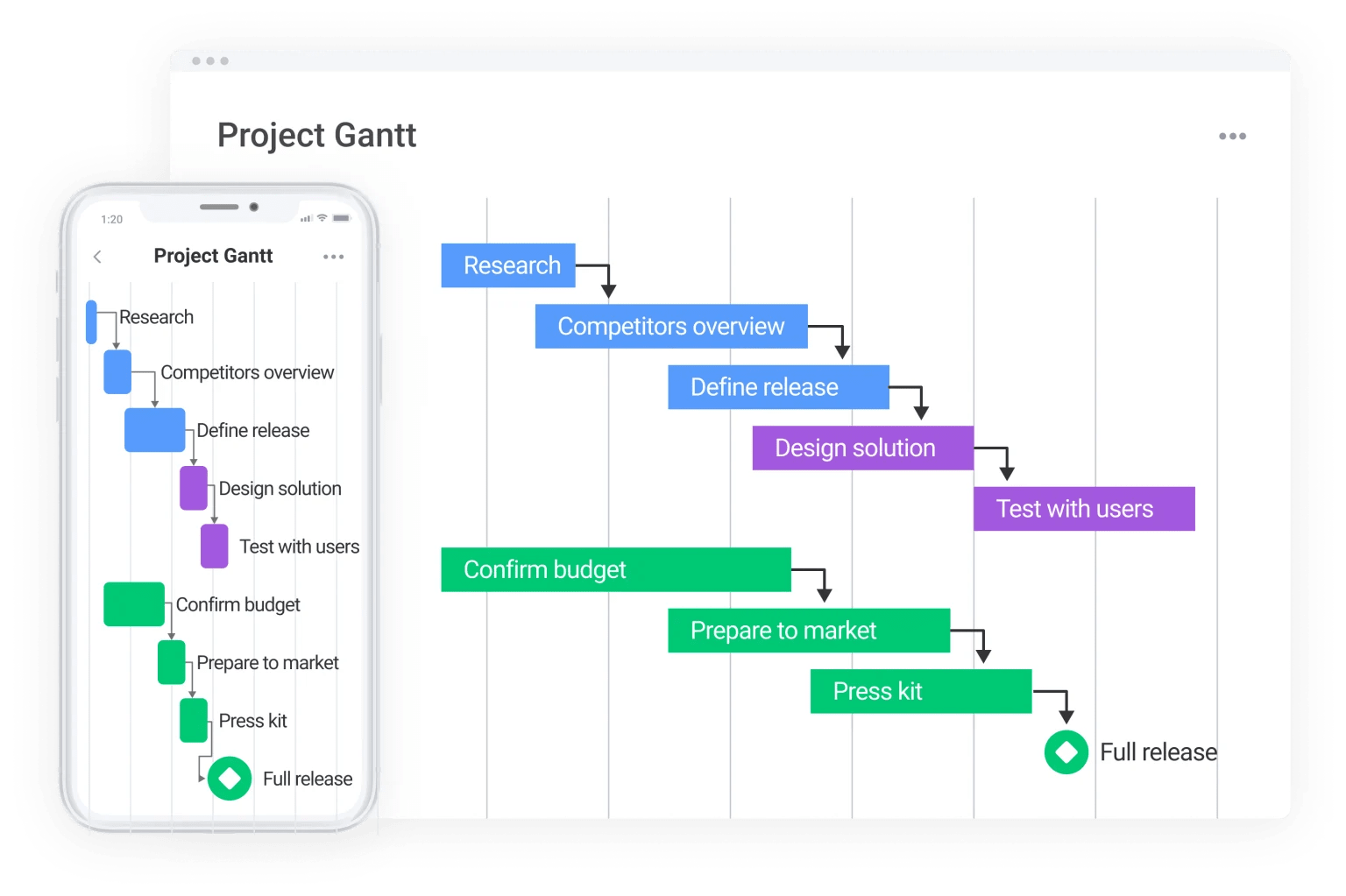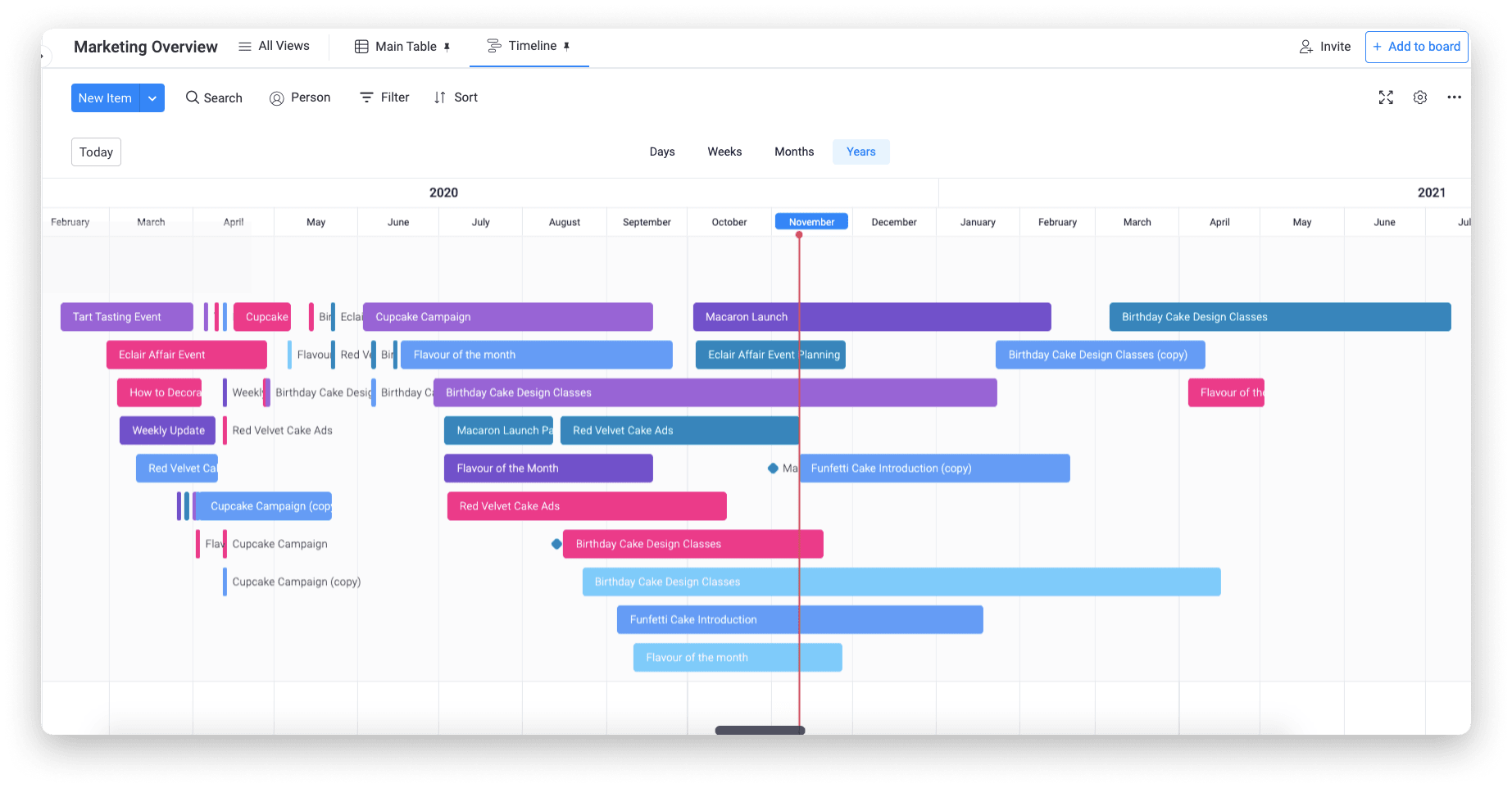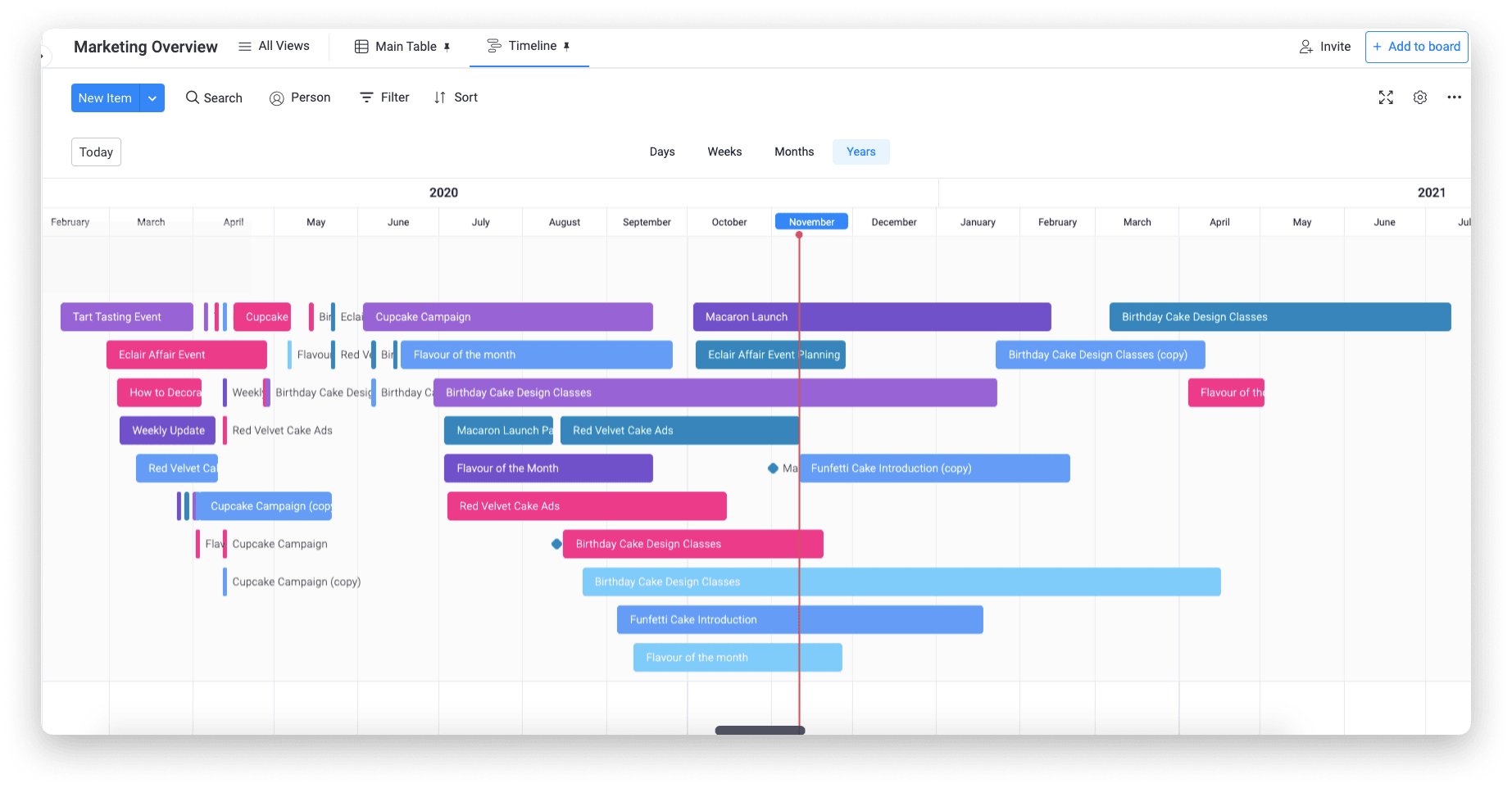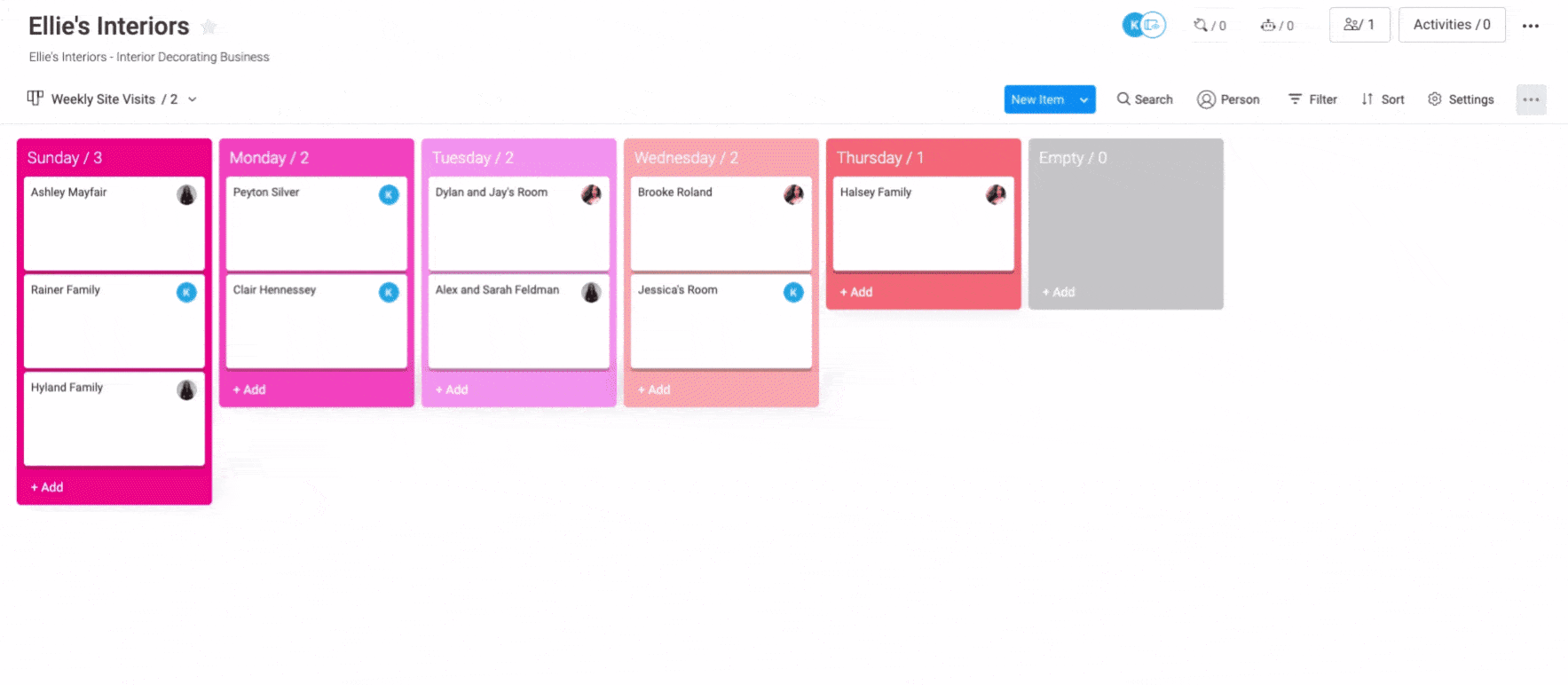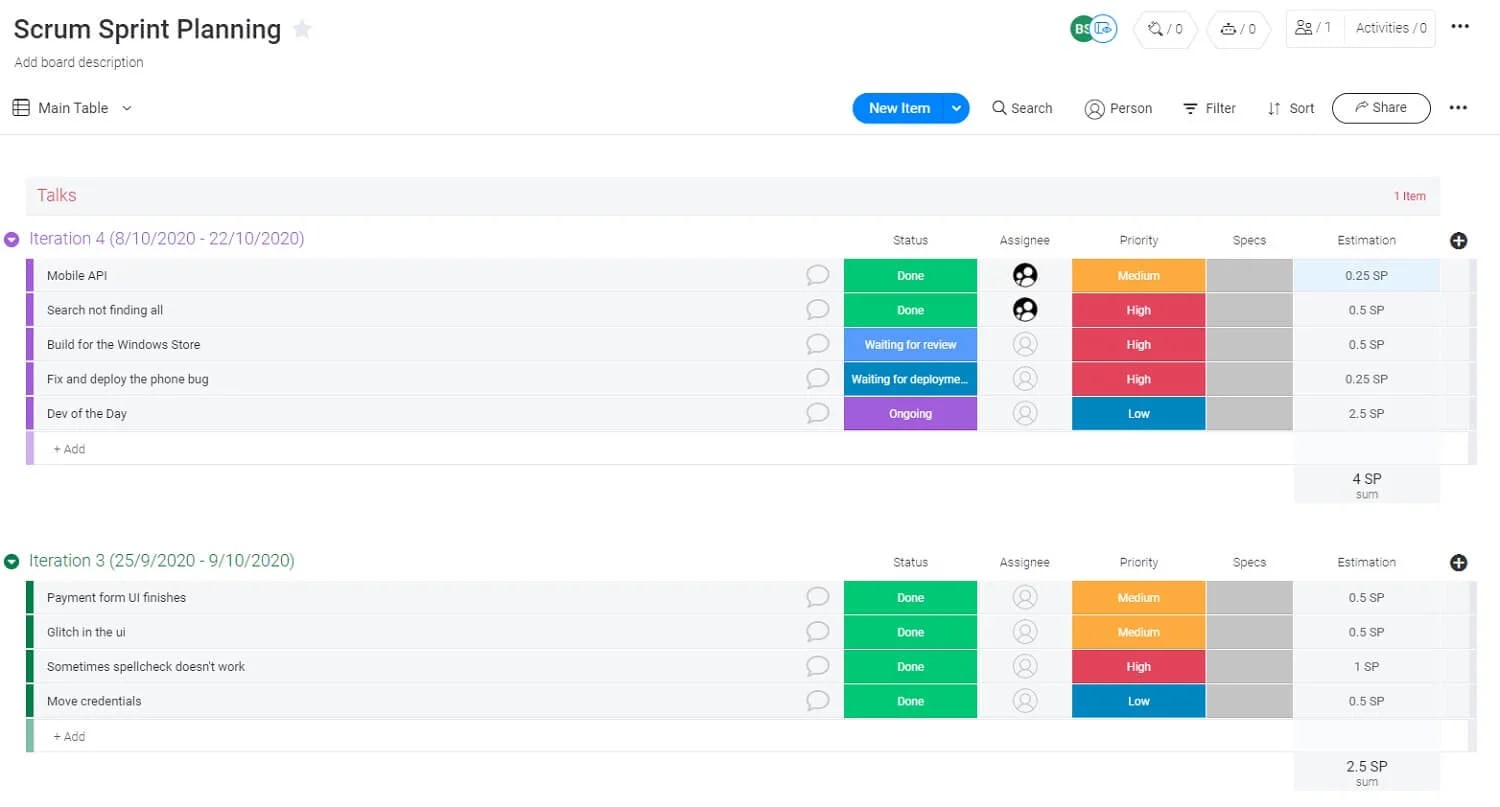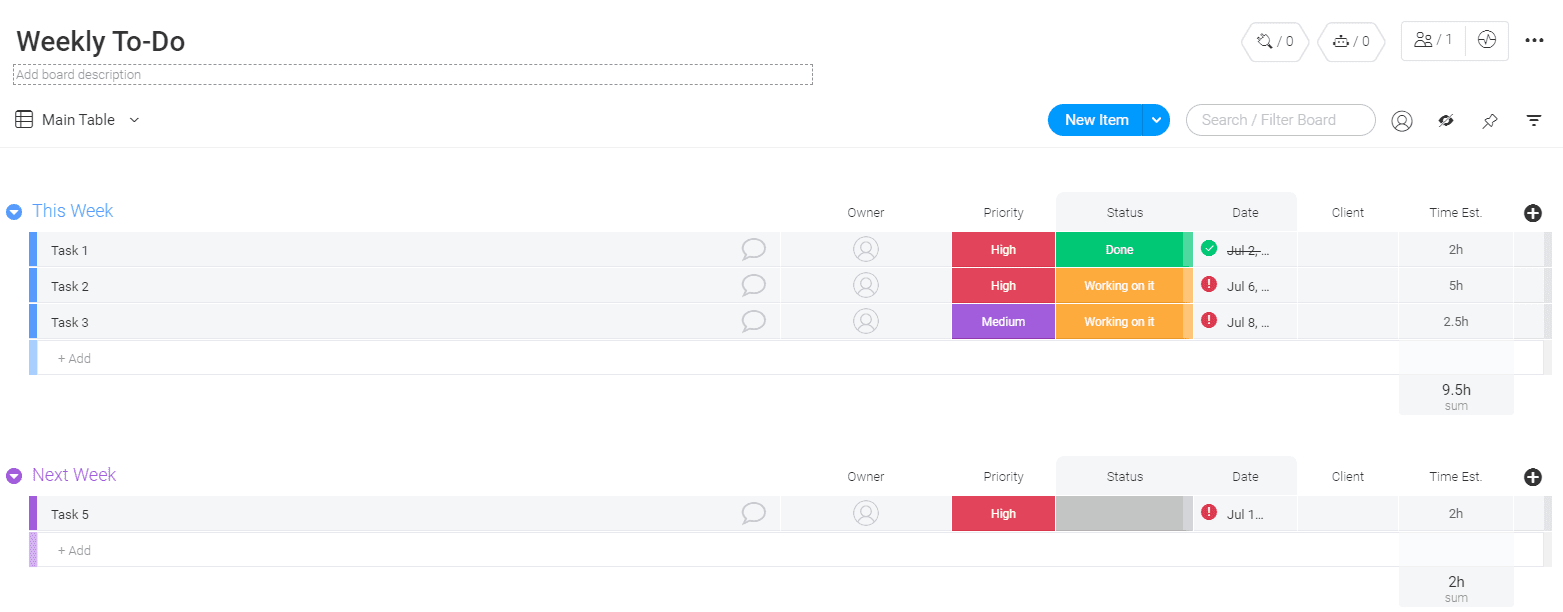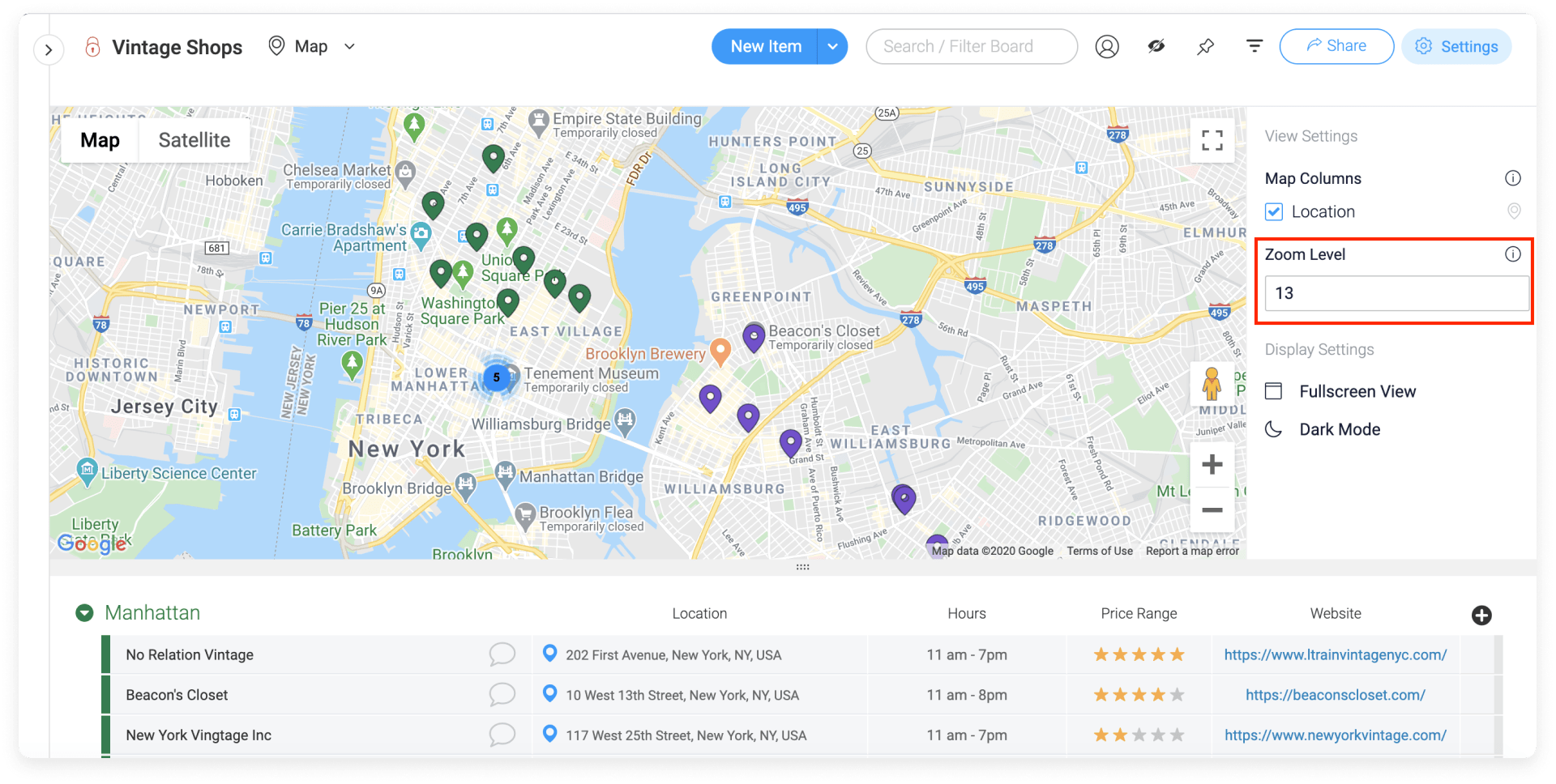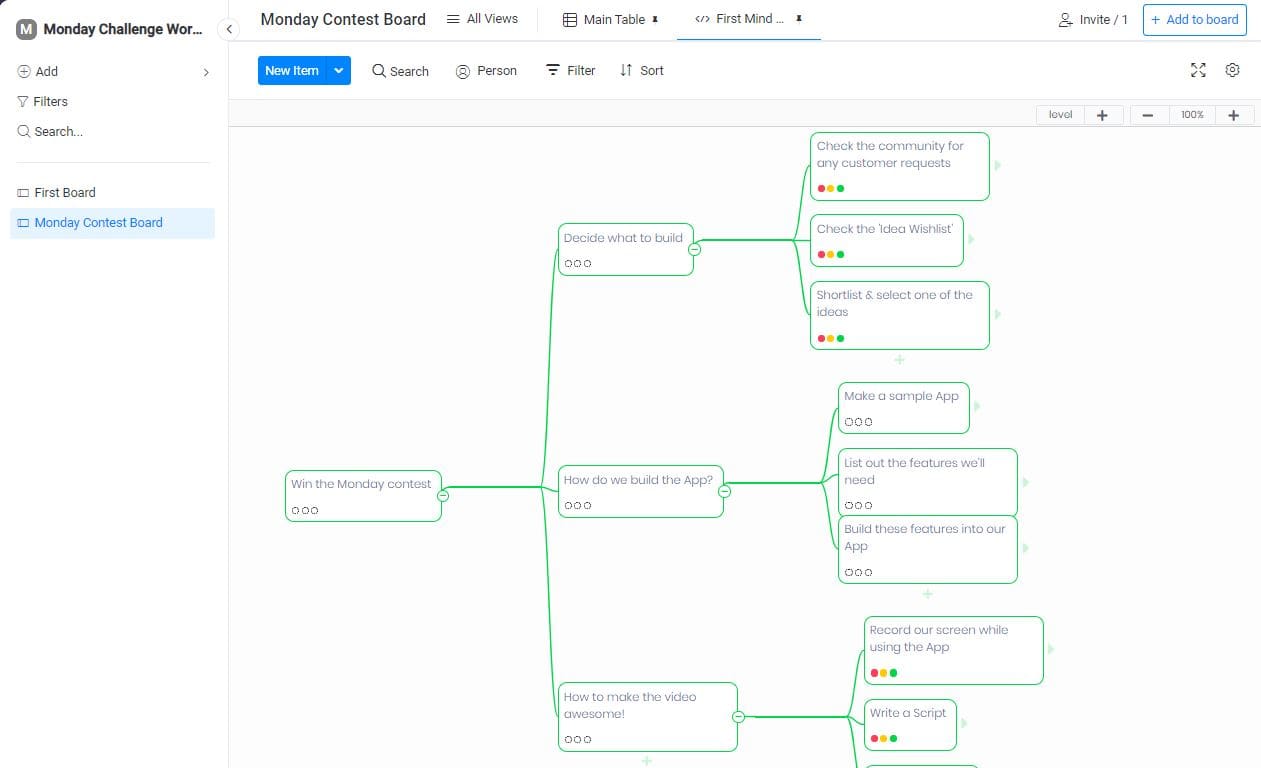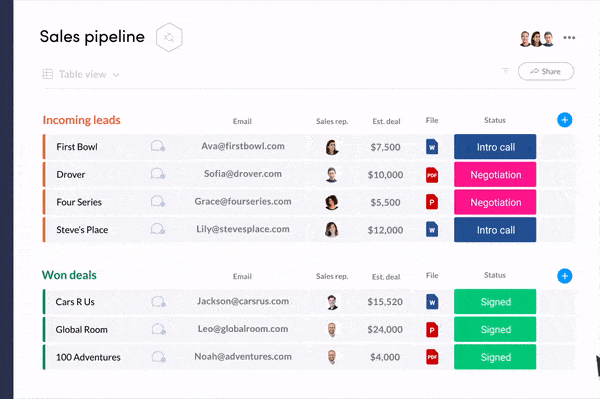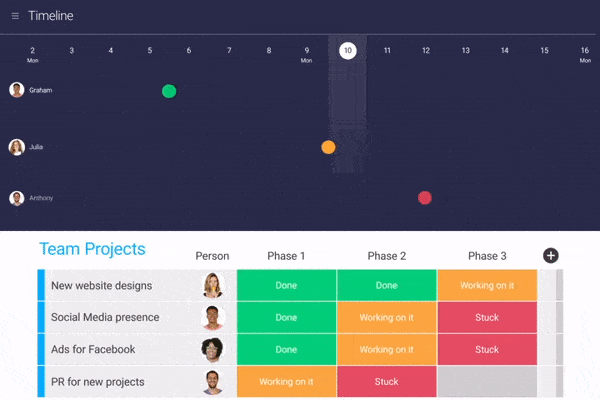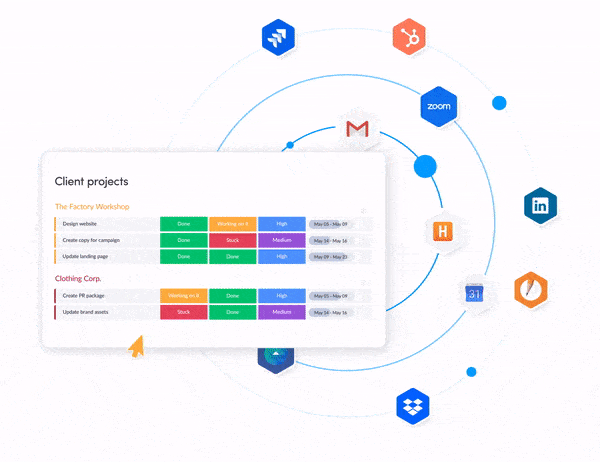Gantt charts have long been a staple in product management. Some of the main challenges that arise by using old-school Gantt charts arise once you start to factor in dependencies and changes to the original project plan. Fortunately, there are Gantt chart alternatives that do a better job of handling projects with multiple dependencies and changes that happen on the fly.
This article will break down six of them, in addition to quickly recapping core components of Gantt charts, and taking a deeper look at monday.com’s unique Gantt View.
What is a Gantt chart?
A Gantt chart is a bar chart that illustrates a project’s schedule, activities, tasks, or events over a specific time.
Modern Gantt charts focus on visualizing dependencies: how tasks relate to one another. They can include multiple team members, color-coded tasks, integrated calendars, and more.
And they’re quite common. 45% of team members say Gantt charts are their most-used project management feature.
A good one looks something like this (and yes, this just so happens to be a monday.com Gantt chart. What a coincidence!):
How does a Gantt chart compare to other alternatives?
To be honest, we here at monday.com have a bit of a stormy relationship with Gantt charts. They’re traditionally used for large industrial projects, and have a tendency to create more work rather than lightening the load. That said, we did incorporate elements of the Gantt chart into our timeline view, and our users seem to like it:
We do see why. Gantt charts are a solid visual tool to show the bigger picture. But other tools provide better visibility during a project.
Why?
Because once you start adding milestones and dependencies, Gantt charts quickly get messy. Take it a step further and start throwing in resource names, lag time, or custom symbols and it’s even messier.
What can you use instead of a Gantt chart?
There are several project management software solutions and tools that serve the purpose of visually displaying an entire project’s milestones, timeline, and dependencies other than the Gantt chart.
We’re particularly fond of the following 6.
1. Project management timeline
A project management timeline is a tool that visually displays the chronological order of events. Their main function is to illustrate when certain tasks will occur and in what order. It’s pretty similar to a Gantt chart, but we think it’s more visually appealing and less cluttered. The monday.com timeline view collects projects or tasks that span multiple days into a clean, color-coded, easily customizable timeline. Easily drill down into different tasks and subtasks to see status updates and document in real-time.
In monday.com, it looks like this:
2. Kanban board
A Kanban board is a collection of tasks and subtasks that are organized using cards and drag-and-drop functionality. Those are then organized in various columns as a project progresses. Kanban boards are traditionally Agile project management tools that were built to help DevOps teams manage their workload, but can be used across all types of industries and teams.
Here’s how an interior designer (Ellie’s Interiors) uses the monday.com Kanban view to organize their materials and budgets. Ellie’s Interiors uses color-coded cards to collect all of their projects as items, divided into different groups depending on the type of project.
They assign designers to each project and include a description of each using drop-down labels for the rooms. The board is organized by room, inspirational images, reveal date, and status.
In monday.com, it looks like this:
3. Scrum board
A Scrum board is a way to organize and manage processes for a Scrum team. They’re most often used to manage sprint backlogs (or a list of work to be completed). More advanced Scrum boards can be used to build a project plan for sprints, manage the high-level scope of the project, and assign tasks and developers to each project.
monday.com’s Scrum Sprint Project Planning Template helps teams to visualize and organize their sprint backlogs. Each task is assigned an owner, workflows are automated, and organization of individual stories is easy with drag and drop functionality.
It looks like this:
4. Project checklist
A project checklist is a project management tool that is made up of a list of tasks and subtasks that are grouped together for organization purposes. Basically, it’s a list of everything that needs to get done.
Master checklists make sure nothing is forgotten and can be used across a wide range of projects. Our weekly to-do list template is the ultimate project checklist in action. You can export and import tasks, automate notifications and workflows, and track progress in a high-level progress dashboard.
5. Maps
In some cases, there’s nothing like a physical map to help get you organized. A map is any physical representation that shows the relative position of something based on location. Perhaps you’re working with multiple clients internationally, traveling often, or in the market for a new home.
Either way, monday.com’s map view easily displays tasks or subtasks by location:
6. Mind Map
A mind map is a diagram that revolves around a single center concept. From there, tasks, words, or concepts are linked together or arranged around that center concept. They’re typically built with a series of shapes and lines.
monday.com’s mind map feature can also be used to organize concepts in this way, as shown below. It’s also a great way to make flowcharts, which is another, similar type of diagram:
monday.com: the best Gantt chart alternative
Wave goodbye to Gantt charts and the headaches they induce, and instead, use any one of the aforementioned alternative tools to streamline your project management with monday.com. Our platform is so much more than basic project management. We’ve set out to transform every area of your team’s workflow so that you never have to give another status update.
It’s easy to use, and the beautiful design will have your team excited to log in and make use of its features. All notifications and status updates can be automated, which means you never have to send another email letting your team members know you’re finished with a certain task or something is stuck.
The best part?
The alternatives to Gantt charts that we mentioned earlier are all at your fingertips within the tool. Plus, you don’t have to choose between them. You can toggle between different views at any time to view a project in the way that makes the most sense for your needs.
monday.com also integrates with most major tools so that there’s no redundant work when it comes to updating the platform. There’s no need to change the tech-stack you’re currently working with.
Finally, you’ll never have to start from scratch. monday.com has over 200 customizable templates to suit your needs. Each of these templates can be viewed using the project management view of your choice.
Replace the static Gantt chart for good
Stop trying to make sense of complex Gantt charts. Dependencies, custom symbols, task owners, and updates easily overload the traditional Gantt chart and end up adding more to your workload instead of lightening it. Instead, use timelines, Kanban boards, Scrum boards, checklists, maps and mind maps to replace this outdated and often cumbersome project management tool — but do so using a platform that’s customizable and automated to suit your needs.
monday.com transcends traditional project management platforms by being easy to use, automated to suit your needs, integrated with Gantt chart tools you already use, and set to view projects in whichever system works for you.

